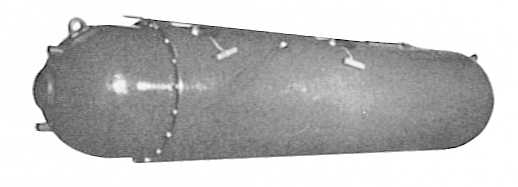Meanwhile, KH is equally pleased to announce the deal...
Kelvin Hughes is pleased to announce that it has been contracted to supply the I-Band SharpEye™ Doppler
submarine radar system as part of a mid-life upgrade program for the Pakistan Navy’s Agosta 90B-class submarines (also known as the Khalid class diesel electric attack submarine).
Working with Turkish defence contractor STM, the main contractor for the refurbishment programme, Kelvin Hughes will supply the SharpEye™ system to the first submarine in 2018.
Traditionally, submarines only tend to use radar for navigation when entering or leaving port, because high-power RF transmissions can compromise their ability to remain undetected when used in more open waters. However, with its low power, pulse Doppler transmission technology, SharpEye™ can provide a reduced probability of intercept which significantly lowers the risk of the submarine being detected but without compromising the target detection performance of the radar.
Featuring high reliability, low maintenance, solid-state technology, the SharpEye™ transceiver can be located within the pressure hull, making use of the existing bulkhead infrastructure, antenna rotational drive and waveguide connections.
Doppler processing of the radar returns means that more targets can be detected, earlier and at a longer range. Delivering improvements in sub-clutter visibility of approximately 30dB, SharpEye™ can identify small, low RCS (Radar Cross Section) targets, even in adverse weather conditions. A series of electronic filters enables SharpEye™ to distinguish between targets of interest and unwanted sea and rain clutter.
Barry Jones, Regional Sales Manager for Kelvin Hughes, commented:
“We are delighted that the Pakistan Navy, a respected and long-standing customer of Kelvin Hughes, has chosen to take advantage of the performance and reliability benefits that our innovative SharpEye™ radar technology can now bring to submarine platforms. We’re looking forward to working with our project partner STM to jointly deliver SharpEye™ capability to the Navy and Khalid Class submarines”.
Earlier this year, Karachi Shipyard & Engineering launched the Pakistan Navy’s 17,000 tonne fleet tanker and Kelvin Hughes can also now announce that it has been contracted to supply the ship with SharpEye™ I and E/F frequency Band Doppler radar as well tactical radar software and widescreen displays. The combined systems will equip the vessel with warship navigation and tactical situational awareness capabilities, including helicopter tracking, recovery and control.
https://www.kelvinhughes.com/news/269-sharpeye-for-pakistan-navy-submarine





 2 this forum
2 this forum 








